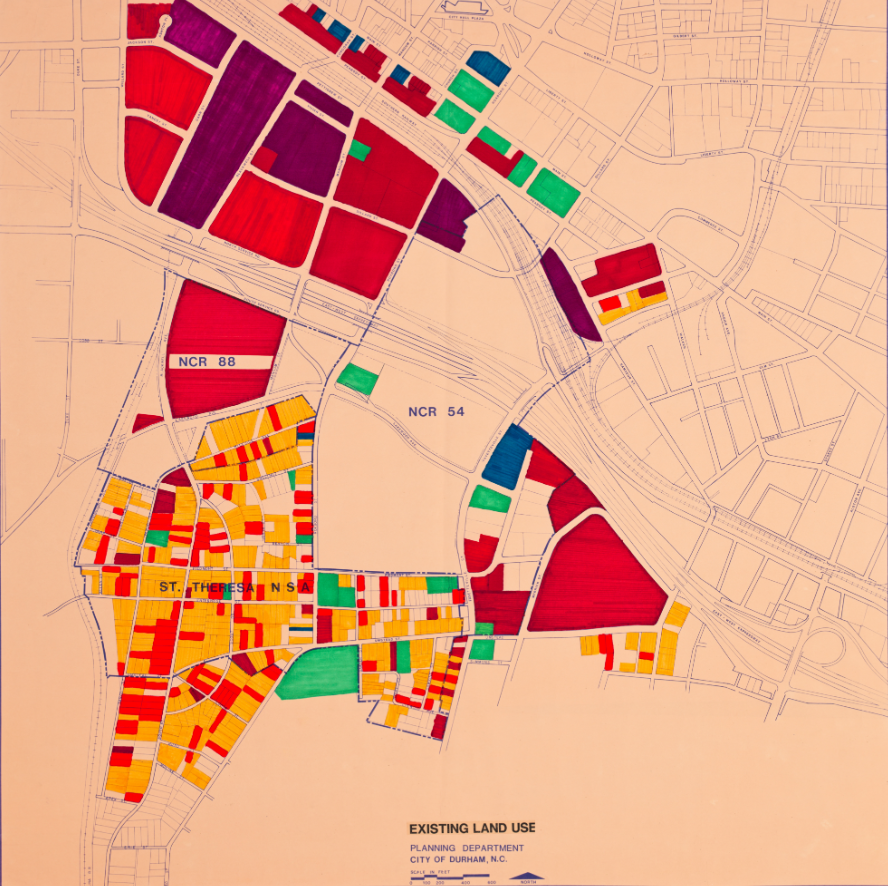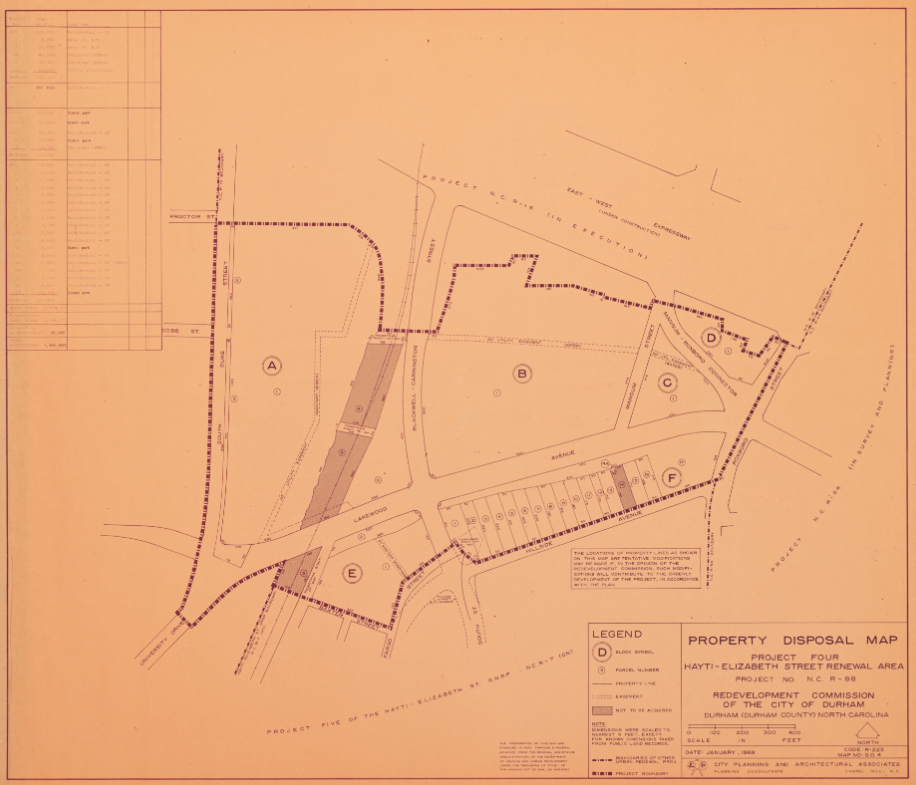With the help of our partners at Durham County Library, we are excited to announce the addition of dozens of maps from Durham County and hundreds of funeral programs from the R. Kelly Bryant Papers and Obituary Collection on DigitalNC. The largest addition of maps is from Durham’s Urban Renewal Project. The maps, primarily from the Hayti-Elizabeth Street Area, Crest Street Area, Willard-Cobb Street Area, and the Downtown Business District, join more than 1300 records related to Durham Urban Renewal Records that are already available on DigitalNC.
After the Durham Redevelopment Commission was founded in 1958 under the premise of rooting “urban blight” out of the growing city, work on renewal projects in seven areas of Durham began in 1961. Alongside the Downtown Business District, the six other renewal area projects were in historically Black neighborhoods across Durham. Although slated to last 10 years, the Durham Urban Renewal project continued for almost 15 years and was ultimately never fully completed. Projects in the six residential neighborhoods impacted over 9,100 people, or nearly 12% of Durham citizens at the time. In the wake of grand plans and promises of prosperity that went largely unfulfilled, over 4,000 homes and 500 businesses were destroyed. In its early days, the Urban Renewal Project found support from stakeholders across Durham, including over 90% of Black voters who voted in the 1963 referendum to approve and fund the official project. Many of these voters, who wanted to see new investment, improvement, and infrastructure in their neighborhoods and believed in the good faith of the promises made by their city government, were ultimately displaced as places like the Hayti neighborhood were never rebuilt as promised.
While Durham is not the only U.S. city with a history of urban renewal projects, the documentation of the project’s planning and progress has been extensively preserved and serves as evidence of the hope, betrayal, and displacement experienced by so many Durham citizens. The maps, photographs, and other records, saved by the Durham County Library and made accessible on DigitalNC, serve as important sources of a project that’s legacy has continued to impact generations of Durham families, businesses, and neighborhoods. Although at face value many of these records like the property disposal maps tell tales of destruction and loss, it is important to center the affected communities and their continued existence as we look at these maps in the present. Despite being uprooted and displaced, the communities targeted by urban renewal efforts did not disappear from Durham and still exist today as inerasable parts of the city’s politics, economy, culture, social fabric, and history.
In the past couple of decades, urban renewal records have become an increasingly important resource in community-led efforts to make histories of racial and housing injustice more visible, educate citizens on how these projects found support, reckon with present-day inequalities that exist as long-lasting legacies of urban renewal projects, and advocate for more just futures through educating and organizing. Projects like Bull City 150 and Open Durham employ government maps, images, and testimonies of residents affected by Durham’s Urban Renewal Program to create free online exhibits, interactive material, and educational information about the past, present, and future of housing justice in Durham. Additionally, materials related to the Urban Renewal Project in Durham can be found in the North Carolina Digital Heritage Center’s primary source set, Urban Development and Renewal, which can help educators create lesson plans related to local urban development projects.
The new addition of funeral programs from the R. Kelly Bryant Papers and Obituary Collection also serve as important sources of community history in Durham County. The new materials include 25 records that include the last names Tabon to Young and can be browsed, here.
More urban renewal records can be found in the Durham Urban Renewal Records exhibit linked here.
More funeral programs can also be found on the R. Kelly Bryant Papers and Obituary Collection exhibit page linked here.
More information about our partner, Durham County Library, can be found on their website here.
Exhibits that also feature materials from Durham County Library include African-American Newspapers in North Carolina, which can be found here, and, the William Franklin Warren Durham City Schools Slide Collection, which is linked here.
More materials, including a newspaper title, yearbooks, maps, photographs, and government records can be found on Durham County Library’s contributor page, which is linked here.


